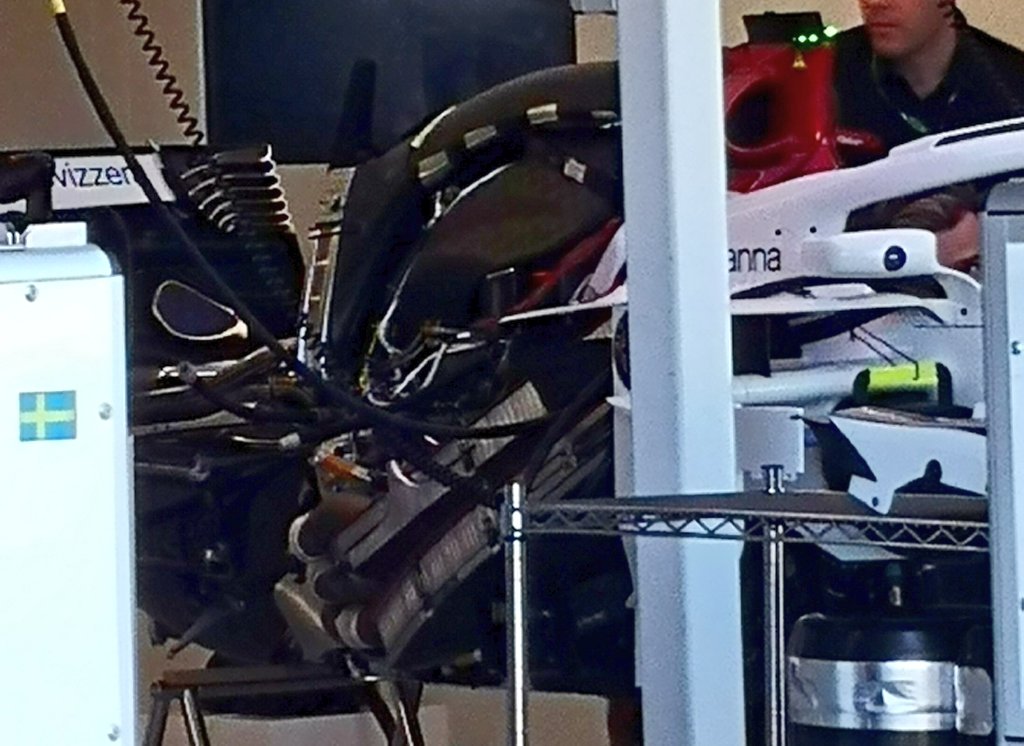
- Login or Register
No account yet? Sign up





According to autosport.com the outermost 125mm of the shroud counts as part of the brake duct rather then as part of the suspension.
They don't need a mechanical reason. As far as aerodynamic and mechanical design goes, 'spirit of the rules' has very little effect. Once a team can generally prove that the design falls within the written regulations then it is allowed.

I think Craig got it a little wrong here. I have no evidence but i don't belive the top radiator has a duct for its self. That would block of the air from the bottom radiator. I think the air from the bottom radiator blows through the top radiator and on its way there it is mixed with a small amount of fresh air from the top inlet. Thus helps reduce pressure loss a little bit.ScrewCaptain27 wrote: ↑18 Mar 2018, 12:57And here’s a diagram by Craig Scarborough:
https://uploads.tapatalk-cdn.com/201803 ... e78375.jpg

It is not mechanical its to control the biggest problem of open wheel race car aero. Tyre wake!
If they have turning vanes behind radiators directing air straight back and a bit down, than this set up is no problem at all, since you usually have bodywork right above those turning vanes now.PlatinumZealot wrote: ↑01 Apr 2018, 18:04I think Craig got it a little wrong here. I have no evidence but i don't belive the top radiator has a duct for its self. That would block of the air from the bottom radiator. I think the air from the bottom radiator blows through the top radiator and on its way there it is mixed with a small amount of fresh air from the top inlet. Thus helps reduce pressure loss a little bit.
The upper radiator is only as wide as the top inlet. Thus the blockage of the radiator below is not an issue. I've actually seen the set up and it looks like there's no duct joining the two rads, just the one from the upper inlet as I've drawn. Sauber have shown over the past few seasons that they can feed a cooler with a duct approaching it at 90 degrees. Many of the gearbox-mounted rollhoop-fed coolers were ducted this way. So the precedent to achieve this has already been set.PlatinumZealot wrote: ↑01 Apr 2018, 18:04I think Craig got it a little wrong here. I have no evidence but i don't belive the top radiator has a duct for its self. That would block of the air from the bottom radiator. I think the air from the bottom radiator blows through the top radiator and on its way there it is mixed with a small amount of fresh air from the top inlet. Thus helps reduce pressure loss a little bit.ScrewCaptain27 wrote: ↑18 Mar 2018, 12:57And here’s a diagram by Craig Scarborough:
https://uploads.tapatalk-cdn.com/201803 ... e78375.jpg